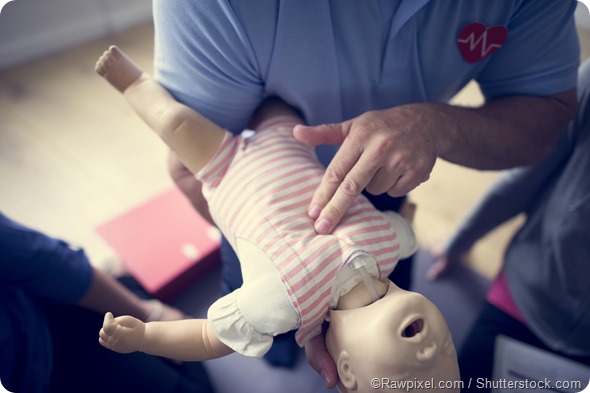Launching 1st March 2023. Also check out: https://www.thailandmedical.news/
Shaken baby syndrome (SBS) is the leading cause of death in abused children. More than 4 out of every 10 of these deaths are seen in children who did not reach their first birthday. Also commonly referred to as abusive head trauma, SBS is the consequence of an infant being violently shaken with resultant neurological damage.
This damage causes a sequence of events in the brain, starting with hypoxia, which leads to cerebral edema and an increased intracranial pressure (ICP). The increase in ICP leads to ischemia and a decrease in the cerebral perfusion pressure, which has devastating consequences.
Infants typically have retinal and subdural hemorrhages, which are pathognomonic for SBS. In addition to these two key findings, the infant may be extremely irritable, have poor appetite, convulsions, unconsciousness, and coma among other signs and symptoms. Diagnosis and detection of SBS are quite challenging, because symptoms may vary from mild to severe and often be mistaken for other conditions, such as viral illness and colic.
However, thorough medical and social history, as well as neuroimaging and ophthalmological examination, in conjunction with laboratory and other physical tests, are necessary to reach a definitive diagnosis.
SBS is a medical emergency. Prompt identification and treatment can be life-saving. Management typically involves a multidisciplinary medical team and the involvement of law enforcement, since it is a criminal offense in many countries. If responsible, the caretaker of the infant might be reluctant to admitting having shaken the baby.
The guardian, if he or she is the perpetrator, might attempt to deceive healthcare professionals by stating the child may have fallen. Treatment depends on how severe the child’s condition is and may require respiratory support, if respiration is depressed, and surgery to bring an end to the bleeding.

Immediately following the violent shaking, an infant may stop breathing. Performing CPR with a ratio of 30 chest compressions to 2 rescue breaths will be necessary until medical help arrives. The mainstay of therapy at the hospital is supportive care in terms of maintaining adequate blood pressure and stabilizing other vital signs.
If needed, mechanical ventilation is provided. Surgical care, particularly surgical evacuation, may be necessary for subdural hematomas. Retinal hemorrhages, on the other hand, usually do not require any therapy, because they tend to resolve on their own. However, in babies with retinal hemorrhages that do not resolve spontaneously or in cases where there is extensive retinal detachment, surgical intervention is crucial.
The morbidity and mortality associated with SBS are much worse than what are seen in accidental trauma. Up to as many as a third of affected infants die as a consequence of being shaken. SBS-associated morbidity is seen in approximately sixty percent of survivors.
The degree of disability may be categorized as moderate to severe and include epilepsy, cerebral palsy, and blindness. These children may also experience behavioral and cognitive disturbances. Some neurological sequelae may not be apparent until the child’s sixth birthday, but they eventually become evident and may necessitate lifelong medical care.